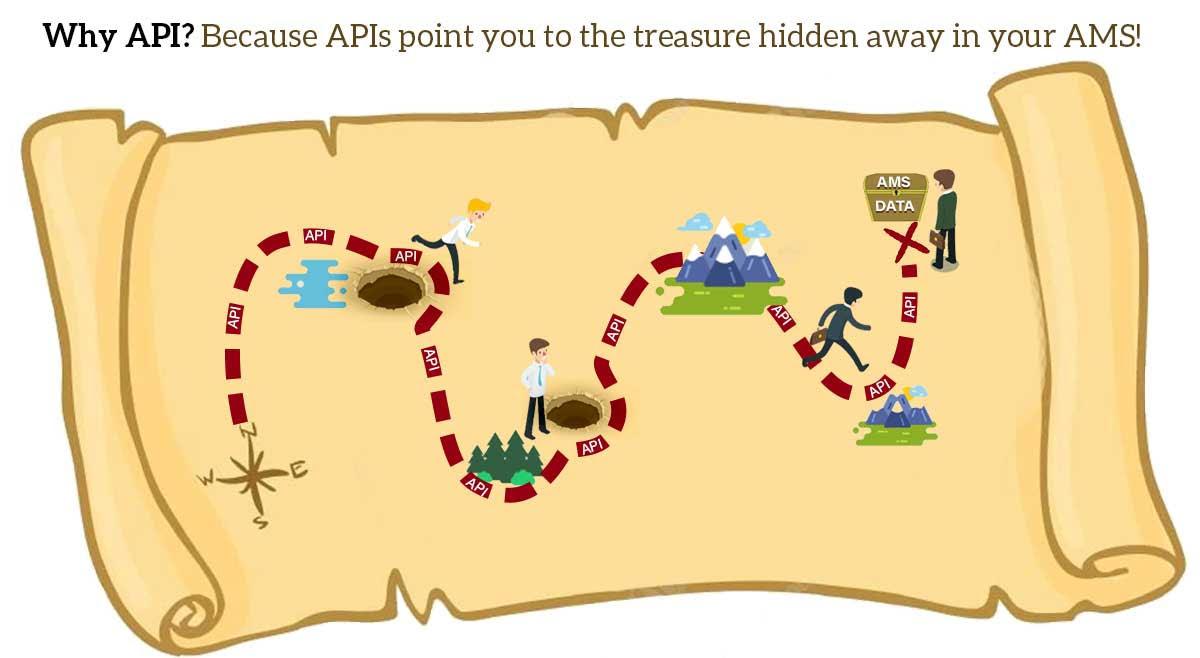
Guest post by Tom McClintock, Empowered Margins
Part I: The API Adjustments Affecting AMS Advances
You get straight A’s if you know how much APIs have changed. We can all ace the exam on how AMSs have changed, having come a long way in just the last few years alone. This isn’t even addressing their profound evolution from fundraising and membership desktop software in the 1980s through the invention of Advanced Solutions International (ASI)’s venerable iMIS in 1991 through web-based software in the 2000s to today’s SaaS offerings in the cloud.
But cloud storage changed everything. While it’s easy to make the grade observing that the cloud has made data more accessible, people often draw a blank in realizing that, while data is accessed from almost anywhere, it’s accessible in more limited ways than when you just could walk into the server room and grab it. This is because, despite the accessibility the cloud is famous for, often the interfaces to cloud storage are more basic and, therefore, limited.
Cloud providers make their money by improving storage, not by improving interface access. This latter function is often a check-the-box feature explored only after the storage agreement is signed. It’s looked at like windshield wipers are by a car manufacturer. They’re necessary to drive, but rarely test-driven, so there’s no real incentive to innovate on the same ol’ same ol’ way of windshield wiping.
But, if you did, the driver would see more, more clearly.
So while cloud access reduces your data-storage cost by reducing maintenance and on-prem infrastructure, it also imposes some new, more hidden costs by removing the data from easy reach. According to Owens Gollamandala, Senior Projects Manager at data-integrator Empowered Margins of Colorado Springs, CO, “associations often own the data, but can’t access it well.”
In any data integration, the application typically requires any number of fields within potentially hundreds from the now cloud-based database. Out-of-the-box cloud interfaces typically offer just a standard subset, almost inevitably omitting some fields your application will need, while including other fields it doesn’t.
But all clouds have a silver lining. As a result of this more limited access, a lot of effort has been spent in just the last few years upgrading APIs or Application Programmer Interfaces which offer new and unique ways to reach the data, and that helps fulfill the vision of cloud computing in a way many don’t realize.
API advancement represents, in fact, one of the single greatest changes in how we derive utility out of an AMS. The fact that these are not your grandfather’s APIs has made a generational leap forward that wasn’t even possible just a few years ago. This is the foundation behind the more visible changes we've seen in AMSs in the last 36 months: a rise in analytics, more powerful AI, more sophisticated content management, and a more customized UX — much of this could not have happened without advances to the APIs “under the hood.”
APIs are now much more flexible in their ability to fetch data, circumventing these predefined interface limitations while allowing more advanced filtering that provides exactly the data needed when the application needs it in the precise format, including the highlighting, required. Data where, when and how you need it makes all the difference.
Optimizing the cloud data model means exploring the full utility of APIs, which:
- increases data availability and ease of access
- automates processes
- seamlessly transitions between different systems
- increases revenue by providing valuable data where, when, and how it’s easily monetized
- extends customer reach and value
- integrates backend data and applications
For more information, check back here on the blog next week for Part II: Getting from Here to There.
Plus, on Wednesday April 21st, 2021 at 1:00 pm EST join Teri Carden, Founder of ReviewMyAMS and Owens Gollamandala along with Empowered Margins Co-CEO Rudy Pandya and Senior Client Services Manager Tom McClintock for a free webinar with actual use cases you need to know about. Compare different APIs across the AMS landscape, unique ways to leverage their data access and pitfalls to avoid as you take a deep dive learning “Why API.” Don't delay... register today!
